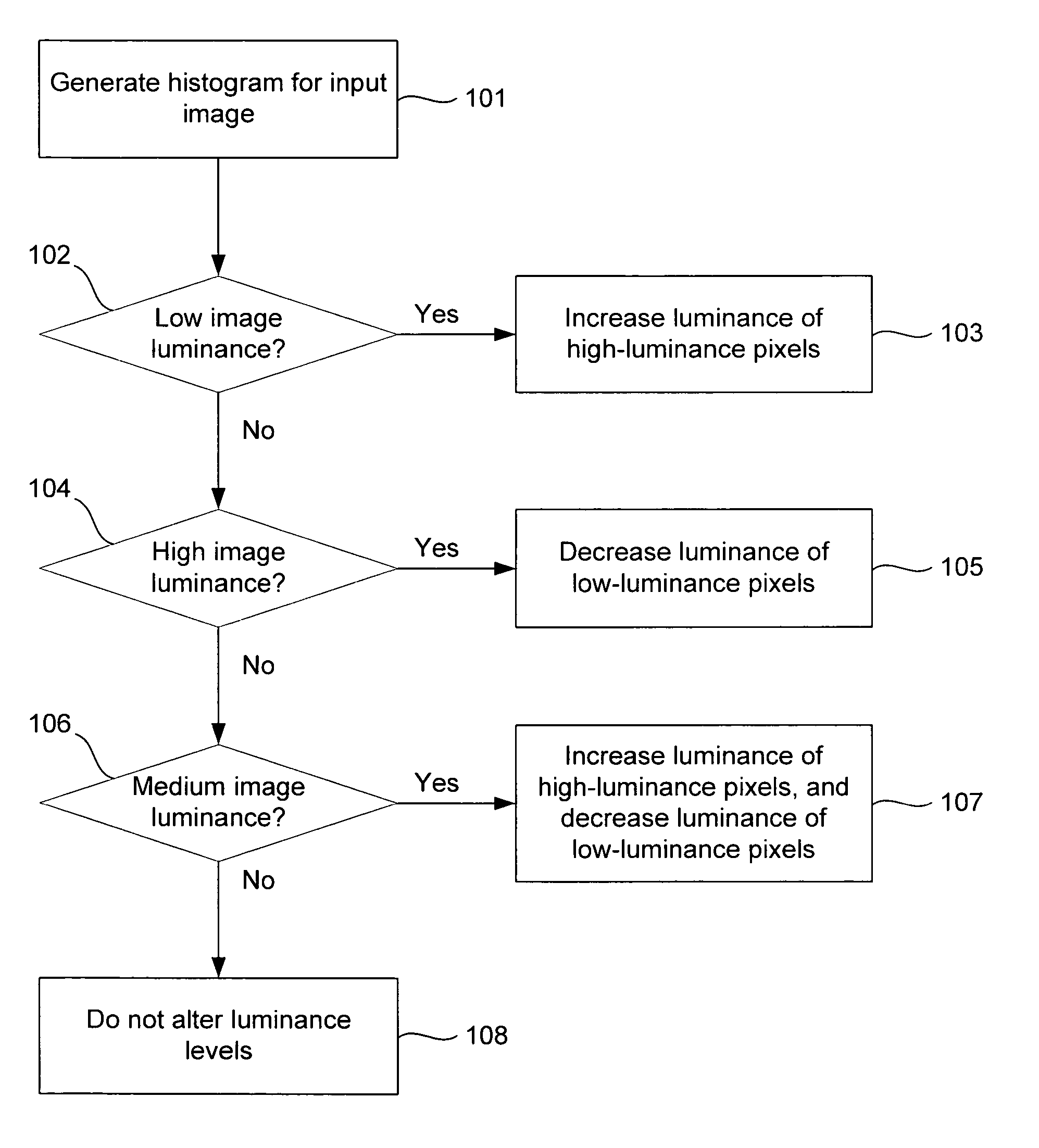Method of generating transfer curves for adaptive contrast enhancement
a transfer curve and contrast technology, applied in the field of contrast enhancement, can solve the problems of poor contrast, unintended average brightness shift as well as saturation or clipping, poor results obtained when increasing contrast, etc., and achieve the effects of increasing luminance in high-luminance regions, enhancing dark pixels, and enhancing bright pixels
- Summary
- Abstract
- Description
- Claims
- Application Information
AI Technical Summary
Benefits of technology
Problems solved by technology
Method used
Image
Examples
Embodiment Construction
[0016]Reference will now be made in detail to a particular embodiment of the invention examples of which are illustrated in the accompanying drawings. While the invention will be described in conjunction with the particular embodiments, it will be understood that it is not intended to limit the invention to the described embodiments. To the contrary, it is intended to cover alternatives, modifications, and equivalents as may be included within the spirit and scope of the invention as defined by the appended claims.
[0017]When a digital display device, such as a liquid crystal display (LCD) based display or a cathode-ray tube (CRT) based display, receives an input image, it is desirable to enhance the contrast of the input image before the image is displayed for viewing. Adaptive contrast enhancement refers to a general approach of analyzing the luminance spectrum of an input image and increasing or decreasing luminance in specific luminance ranges in order to enhance output image con...
PUM
 Login to View More
Login to View More Abstract
Description
Claims
Application Information
 Login to View More
Login to View More - R&D
- Intellectual Property
- Life Sciences
- Materials
- Tech Scout
- Unparalleled Data Quality
- Higher Quality Content
- 60% Fewer Hallucinations
Browse by: Latest US Patents, China's latest patents, Technical Efficacy Thesaurus, Application Domain, Technology Topic, Popular Technical Reports.
© 2025 PatSnap. All rights reserved.Legal|Privacy policy|Modern Slavery Act Transparency Statement|Sitemap|About US| Contact US: help@patsnap.com



